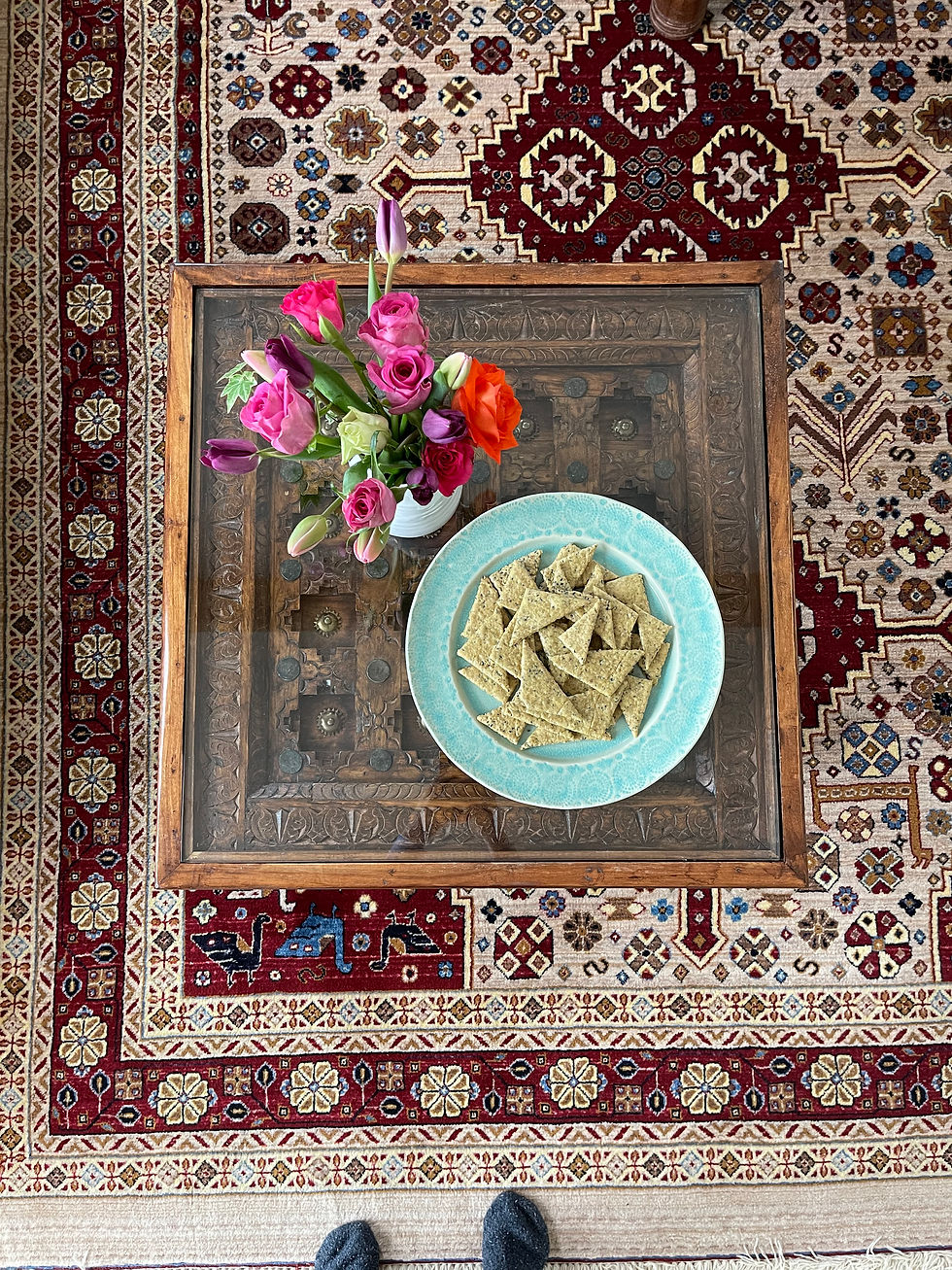The Ayurvedic Clock, Chronomedicine, and Energy Management
- Carrie Lavie

- May 18
- 3 min read

The Ayurvedic Clock is a comprehensive demonstration of the vast knowledge behind Ayurveda and the influences and cycles of our lives.
As per Ayurveda, the three pillars of health, The Trayopasthambha are:
Ahara (Inputs - food, senses, water, breath)
Nidra (Sleep)
Brahmacharya (Energy Managment - non depletion of Ojas - vitality and immunity)
There have been many practices attributed to Brahmacharya, which are specified and tailored to the individual, but in part, include the avoidance of over depletion through abstinence various activities.
Learning more about ones Prakruti (constitution), and Vikruti (current state), with the help of an Ayurvedic Practitioner, will be like walking a forest path with a trail map, rather than wandering aimlessly, deeper and deeper into a vast forest, falling into pits or being blown here and there by the wind.
The Ayurvedic Clock connects us to the circadian rythms of life. The times of the day, the day and night cycle, the cycles of the seasons, life cycles, and so on. It utilizes the fundamental functional groupings (doshas) of Ayurveda to express the dominant qualities at a given time.
The energetic qualities of Vata are: Light, mobile, erratic, fast, uncertain, irregular, dry, rough - the principle of movement.
Pitta energy is: Hot, fiery, focused, intent - it is the principle of transformation.
Kapha energy is: Slow, steady, inert - it is the principle of cohesion/stability.
When we understand the basic scientific concept that:
Like increases like and
Opposites Balance
Then we can become intelligent about how we manage our time, our energy and ultimately the vitality of our lives.
Ayurveda made this very simple by recommending daily , seasonal, nightly, and life transition routines that have the needs of the body in relation to the cellular circadian clocks embedded in them.
The 2017 Nobel Peace Prize in Pysiology or Medicine was awarded for the findings that revealed internal clocks based on circadian rhythms. Chronomedicine is the outcome of that research as well as multiple studies showing the fundamental requirment for our body-mind systems to be aligned with the circadian rhythms.
This alignment is important in Ayurveda for balancing the doshas, longevity, mind care, and thus life care. Chronomedicine's language is around function as well, although using different explainations express similar needs of the pysiology. It suggests that alignment is essential for governing daily sleep and wake rhythm, body temperature, hormone secretion (eg melatonin, cortisol, testosterone), metabolism, and much more. Correlations between circadian rhythm misalignment and diseases such as metabolic syndromes, cancer, psychiatric disorders and cardiovascular pathologies have all been documented. Many of the recommendations including having the last meal of the day 3 hours before bedtime, ensuring consistent meal times, and prioritizing sleeping early are all in common with Ayurveda.
Ayurveda has been applying the Ayurvedic Clock for thousands of years. In Ayurveda, it is understood that we as individuals are made up of the same fundamental building blocks as all of nature: The Panchamahabhutas (The Five Great Elements).
As per Ayurveda, we are made up of this material life, from our mother and father, but we come to life by the addition of our independent soul, or Atma.
As per Ayurvedic texts it is said that the characteristics of soul (Atma) are:
Nirvikara - devoid of deformity
Para - minute, invisible, endowed with best qualities, different from shareera (body) and satva (mind)
Nitya - indestructible, atom doesn’t get destroyed (eternal) in spite of the body getting destroyed (death)
Drashta - spectator, alma being a spectator, keeps witnessing each and every activity pertaining to the body and mind.
So as a part of our living, we become responsible for protecting the sacredness of the body-mind system, so that we can experience health on all levels.
As is said in Ayurveda:
समदोषः समाग्निश्च समधातुमलक्रियः |
प्रसन्नात्मेन्द्रियमनाः स्वस्थ इत्यभिधीयते ||४१||
Samadosha Samagnishcha Sama Dhata Mala Kriya. Prassanna atma indriya manah swastha iti abhideyate
An individual that maintains a balanced state of the main elements of the body (including dosha anddhatu), adequate digestion (agni), proper excretion (mala kriya), blissful condition of soul (atma), satisfied senses (indriyan), and a happy state of mind (manas) is called a swasthya or healthy person.
-Sushruta Samhita, Sutrasthana, Ch 15, V41
Feel free to contact me to explore how to apply this tool specifically to you and your life.





Comments